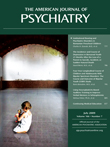Performance-Based Measurement of Functional Disability in Schizophrenia: A Cross-National Study in the United States and Sweden
Abstract
Objective: Recent advances in the assessment of disability in schizophrenia have separated the measurement of functional capacity from real-world functional outcomes. The authors examined the similarity of performance-based assessments of everyday functioning, real-world disability, and achievement of milestones in people with schizophrenia in the United States and Sweden. Method: The UCSD Performance-Based Skills Assessment–Brief Version (UPSA-B) and a neuropsychological assessment were administered to schizophrenia patients living in rural areas in Sweden (N=146) and in the New York City area (N=244), and patients’ functioning was rated by their case managers. Information from records and case managers was used to determine the frequency of living independently, working, and having ever experienced a stable romantic relationship. Results: Performance on the UPSA-B was essentially identical in the two samples (New York, mean score=13.84; Sweden, mean score=13.30), as were scores on the case manager ratings of everyday activities (New York, mean=49.0; Sweden, mean=48.8). The correlations between UPSA-B score, neuropsychological test performance, and case manager ratings did not differ across the two samples. The proportion of patients who had never had a close relationship and the rate of vocational disability were also nearly identical. However, while 80% of the Swedish patients were living independently, only 46% of the New York patients were. Conclusions: While scores on performance-based measures of everyday living skills were similar in people with schizophrenia across cultures, real-world residential outcomes were very different. These data suggest that cultural and social support systems can lead to divergent real-world outcomes among individuals who show evidence of the same levels of ability and potential.



